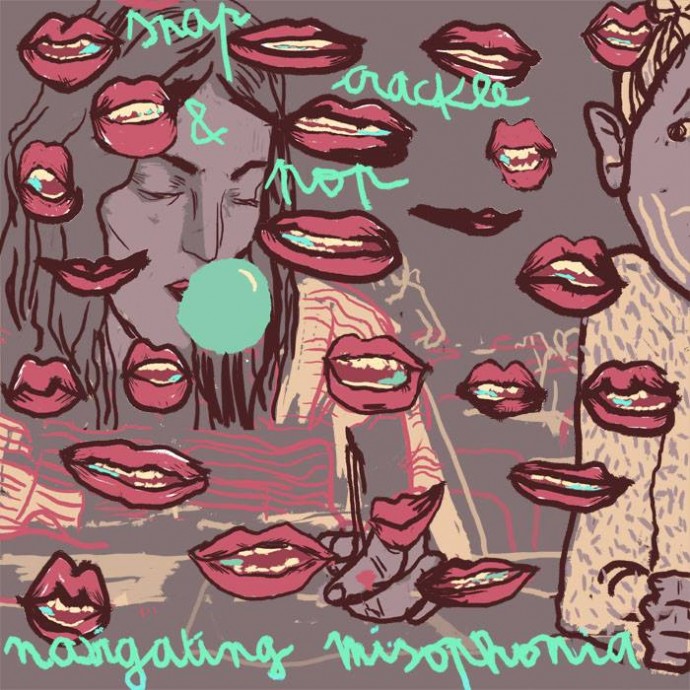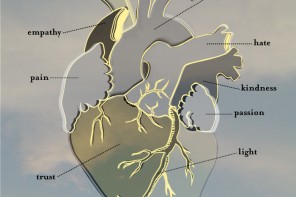If you’ve ever had the urge to punch someone in the face because they were chewing with their mouth open, you may be surprised to find yourself suffering from misophonia. This little-known anxiety-related disorder causes the brain to be triggered by certain sounds, immediately eliciting a fight or flight response, and causing the sufferer to either flee the situation or be overcome with rage.
Unfortunately, nobody really knows how or why misophonia arises and so far no research has been done to better understand the causes, symptoms and potential cures for this disorder. Living with misophonia and struggling against a world of misinformation, or lack of information entirely, is common amongst sufferers and with no guidance, some have had to pursue their own treatment. Sensa Nostra speaks with one misophonic who, after fifteen years of wondering why he experienced this intense response to trigger sounds, has recognised the disorder and successfully alleviated his misophonia symptoms through meditation and mindfulness techniques.
It took me a long time to realise that my irrational anger towards certain innocuous noises actually had a name. Looking back, I probably developed misophonia at around ten years old when my parents would point out to me annoying sounds that I was making – like eating loudly or gulping my drinks. I learned quickly to pick up on these sounds, initially in myself to avoid chastisement, but eventually in other people too. And, following the well-intentioned guidance of my parents, I learned to develop the same feelings towards these sounds that they had expressed to me. This is where the cycle started.
After years and years of reinforcing unhealthy fight or flight responses to these noises, misophonia began to consume me. At that point I’d never heard of the disorder and assumed I was alone in my sound-induced anxiety. I was at my worst just before I found my psychologist. A new colleague had just started at work and very quickly my lunch break became the hardest part of the day. Peter sat right next to me and was completely lacking in self-awareness. His favourite snacks were wheat biscuits and he’d crunch loudly at them throughout the day. For some reason, my threshold with him was particularly low. When he started eating his lunch I’d put my earphones in, or I’d wait patiently for him to start eating so I could take the opportunity to leave the office and have my lunch somewhere else. As soon as I heard that first bite, I was on edge and defensive. I couldn’t focus on anything else. Every extra bite would make me angrier and angrier, waiting for him to stop and fantasising about smashing my computer monitor into his head. I wrote scripts in my mind about how to confront him. I thought about slapping him just to make it stop. If I didn’t have my headphones and I couldn’t leave the office, I’d block my ears with my hands. I was completely enraged, every day.
It was at that point I started to research my symptoms and discovered the term ‘misophonia’ for the first time. I found that there were other people that experienced similar responses towards certain sounds, but I assumed it was just hypersensitivity. Even when I came across a misophonia forum, I didn’t want to believe it was an actual disorder. On the surface it still looked like a group of overly sensitive people complaining. What eventually legitimised it was coming across a few research papers that mentioned, as a peripheral note, that misophonia had been encountered during their undertakings and that it should be investigated further. As yet, nobody has, but there are at least people that recognise that it might be a genuine disorder and, luckily, my psychologist was one of them.
Without any real research, it’s difficult to understand why misophonia exists in the first place. My psychologist has a theory that it’s a leftover evolutionary mechanism – a mechanism that used to be beneficial if, say, we were approached by a predator and needed the fight or flight response to kick in with a surge of adrenalin and, as a consequence, anxiety. In the modern world, we no longer have any real dangers, but we still have the mechanisms once used to deal with them. So her theory is that these can be triggered by ordinary stimuli because our brains’ rewarding structure is still in place to encourage these behavioural responses that once determined our survival. This repeated cycle of reacting to trigger sounds, releasing adrenaline and reinforcing the disorder builds up behavioural patterns very quickly.
After fifteen years of reinforcing these thought patterns, I was trapped. Every time I encountered the trigger sounds I would go through the same process of waiting for the sounds to stop while building up anger, and eventually rewarding myself with a wave of relief when it did. With this sort of reinforcement I couldn’t have any response but the one I’d trained myself to follow. Eventually my threshold had decreased further and further and, around the time Peter started working with me, I was being triggered more easily than I used to be.
Initially, after learning about misophonia, legitimising the phenomenon made it harder to deal with. Suddenly I felt like I had an excuse for feeling the way I did. But it still sounded so stupid – even if it’s a legitimate disorder you can’t go around telling people you have misophonia and you don’t like the sound of eating, because they’ll think you’re an idiot. Even though I now had a name for what I was experiencing, there still wasn’t anything to do about it. There still wasn’t a cure.
I knew though, that I wanted to find a way to do something about it and now that I knew it existed, it was easier to find information. For a long while I just spent my time watching that misophonia forum where people discussed their symptoms and triggers. But none of them were getting anywhere with it. Many of them were using the same unhealthy coping mechanisms that I was – fleeing the situation, blocking out the sounds, or even mimicking and mocking whoever was making the trigger noises. Others had sought help from psychologists, only to be dismissed as over-sensitive and told to chill out. I was afraid I would face the same issues. By accident, I was lucky enough to see a psychologist who, although she hadn’t heard the term before, recognised it as an anxiety-related disorder and had some ideas about how to approach it. Having somebody else take it seriously meant that there was hope, and I practised, diligently, the exercises she’d given me to begin breaking down the thought patterns I’d built up over so many years.
Rather than avoiding the triggers, I was taught to confront them with a mixture of exposure therapy and simple mindfulness techniques. I was taught to meditate and focus on all the senses, rather than just one specific sense, or even one input into that sense. When misophonics are triggered by a sound, they don’t hear anything else – they are incapable of paying attention to anything other than this one stimulus. By meditating on all my senses at once, I learned to broaden my intake, experiencing other sounds, sights, feelings, smells, alongside the trigger sound that had previously taken my full attention. The purpose is to experience a range of different inputs simultaneously, diluting the trigger sound amongst the other senses to reduce the anxiety related to it.
I wanted to use these exercises to understand my symptoms, to understand what my brain was actually doing. When you see how it works, it’s easier to deal with. I know now that the more respect I have for somebody, the higher my threshold will be. I know when I’m tired or stressed, my senses are heightened and my threshold is lowered – it’s much easier to be triggered in a tired state to the point of severe anxiety. And knowing how it works makes it much easier to monitor and dismiss the feelings that arise in times like that.
It was also comforting to know that I never had to jump right into the exposure therapy. There’s no expectation to suddenly be okay with trigger sounds. One of the exercises I was encouraged to practise was to set a timer and expose myself to the trigger for a period that I knew I could handle. The goal was to notice how I was feeling or what my thoughts were doing during the time of exposure. Starting with one minute timers, I would listen to Peter eat his lunch and try to recognise the thoughts and emotions that were being brought up. The intention was never to suppress my rage, but to observe it. At the end of the minute I could go back to my headphones or leave the office if I wanted to. I’d exposed myself to Peter’s munching for a short, manageable period of time and recognised that I hadn’t died. Nothing terrible had happened. Doing this slowly cemented the idea that there was no real reason for feelings of anxiety in that situation. I was changing my brain’s rewarding patterns by discouraging anxiety and encouraging tolerance.
Every day I would do a few one minute periods of trigger exposure and within the first week I was doing a couple of minutes back to back, encouraged by my successes. I was beginning to rewrite my thought patterns and reward myself in healthy ways instead of unhealthy ones. After a few weeks I could last through an entire lunch break. I knew I was overcoming misophonia when Peter would finish his lunch and I was disappointed that I couldn’t keep challenging myself to more minutes.
These days, I’m still aware of the possibility of the disorder coming back. While the symptoms are almost entirely gone, I can see them occasionally creeping back on days when I’m really tired or stressed. But I notice them and can immediately deal with them, which was the entire goal. The exercises were never designed to ignore the symptoms but to notice them and become comfortable with them. Now I’ll hear trigger sounds and recognised that they once would have enraged me, but the feelings of anxiety are completely gone. It’s become second nature now and should I ever find myself revisiting those symptoms, I can stop the patterns from forming again.
The key to dealing with misophonia is taking responsibility for it. While legitimising it as a real disorder is helpful in knowing how to deal with it, it’s easy to begin expecting people to accommodate you because of what’s going on in your own head. I would hate for misophonia to become accepted as a disability – that line of reasoning discourages people from trying to fix it. A cure is possible, in a matter of weeks in my case, so long as misophonia sufferers are willing to try. If anything, it’s more important that mental health professionals educate themselves firstly on the existence of misophonia, and secondly, on the techniques necessary to deal with it.
When asked, I say I’m cured, but misophonia is an anxiety related disorder and, like other disorders of the same nature, it’s unpredictable. I know that struggling with anxiety is part of my personality – I’m susceptible to that sort of thinking. But now that I’ve become aware of misophonia, and conquered it, I know what to look for should it come up again. The techniques I’ve learned to deal with this particular disorder have helped with other anxiety issues and unless something drastic happens, I’ll continue to say that I’m cured. I guess I owe my thanks to Peter.







